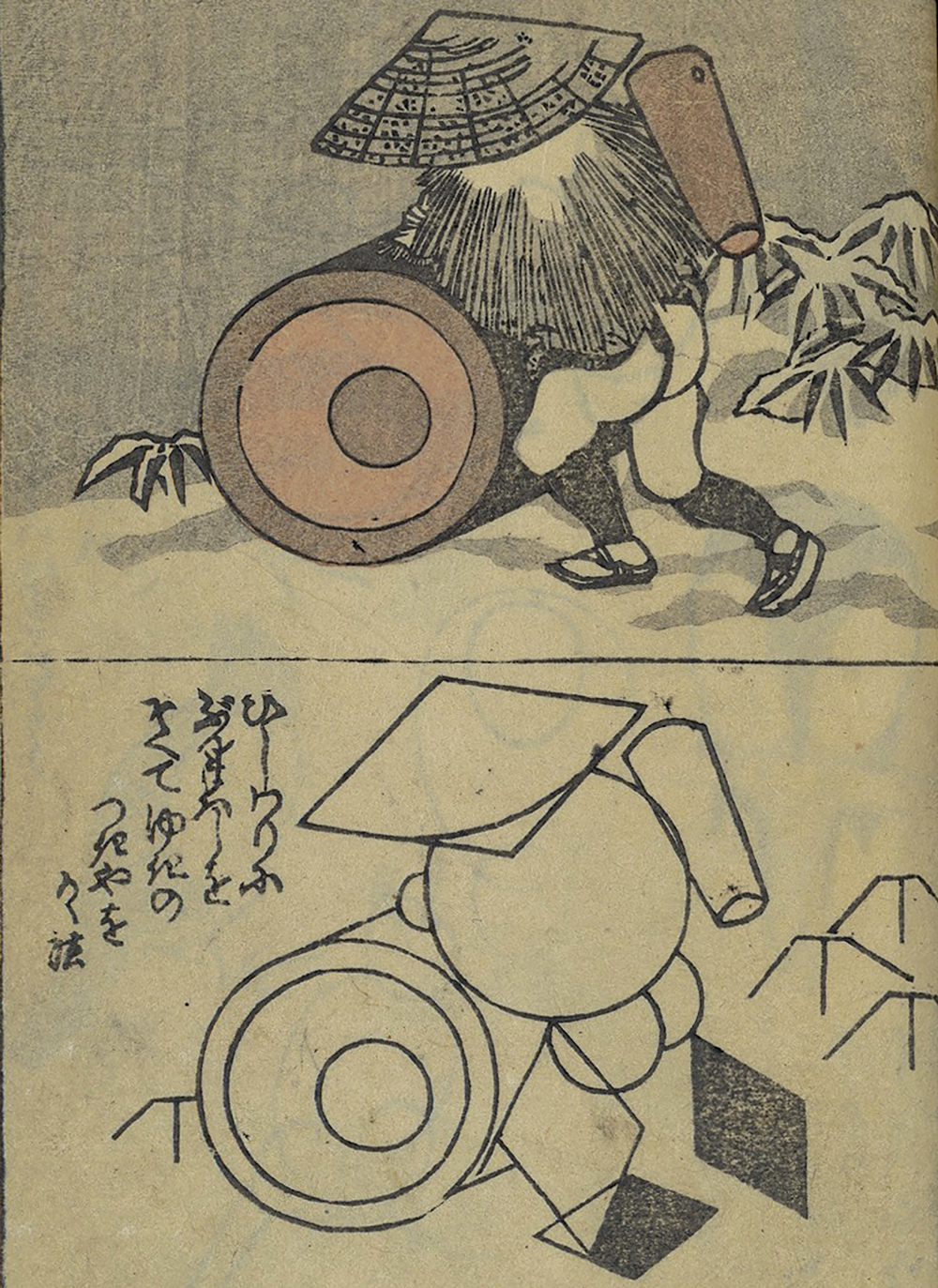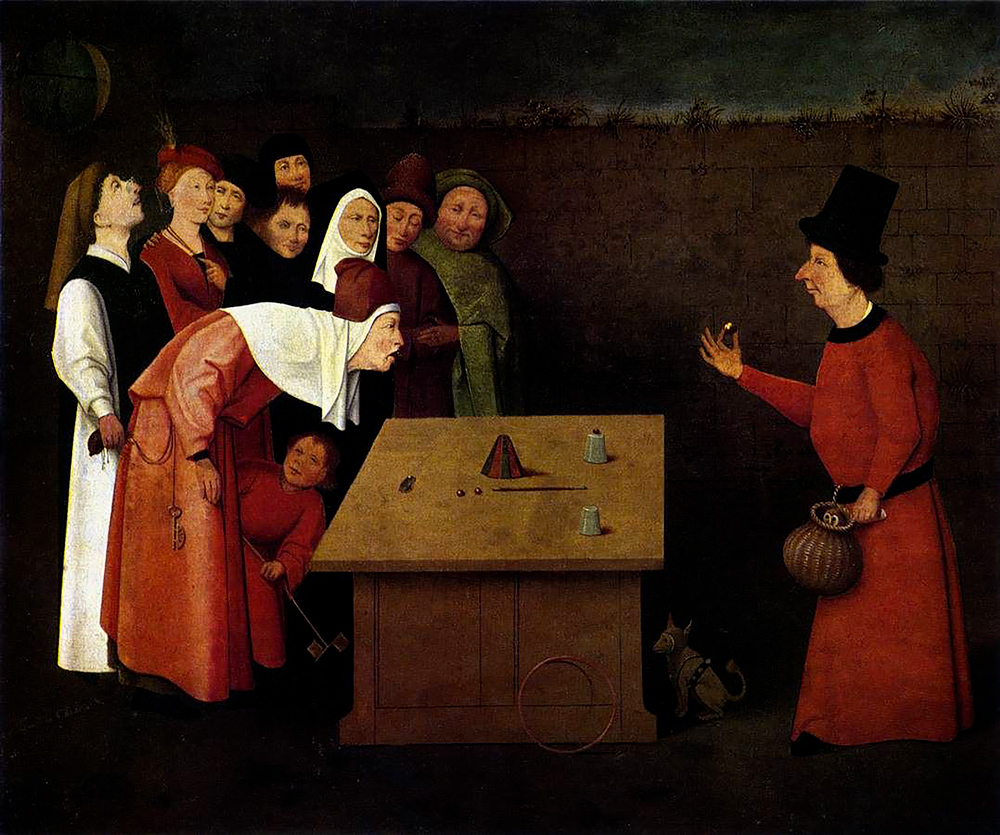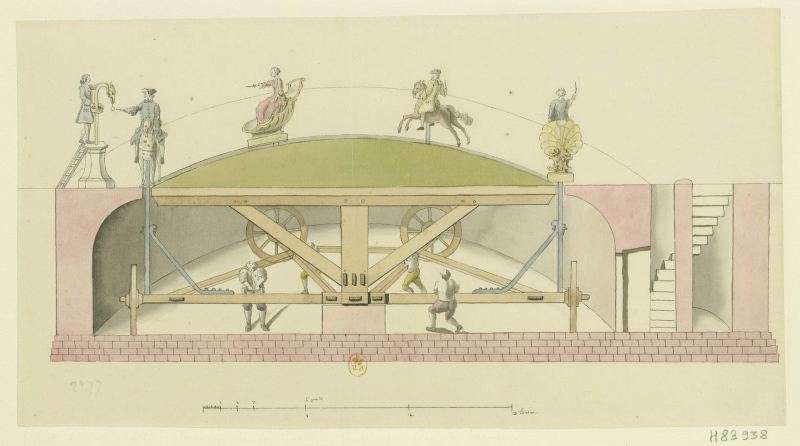Fig.
1 - Katsushika, Hokusai (1760-1849), Leçons de dessin par la
décomposition géométrique.
Bibliothèque nationale de France, département
Estampes et photographie, 4-OD-154.

Fig.
2 - Hieronymus Bosch, Il Prestigiatore, 1502, olio su tavola.

Fig.
3 - Paris, château de la Muette: coupe de la plateforme du
jeu de bague, dessin, 1719
